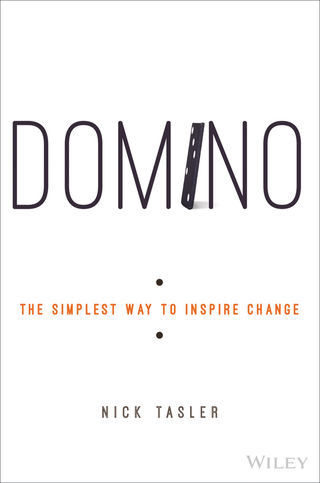Anger
Use Black Diamonds to Trigger Change
How a simple quirk of the human mind create instant change in others
Posted November 11, 2015

Before Martin Luther King had a dream, E.D. Nixon had a plan. It was a good plan, too. Nixon thought he could make huge strides in the struggle for racial equality in his hometown of Montgomery, Alabama by orchestrating a boycott of the city bus system–both a bastion of segregation and a huge money-maker for the city.
He had a sound strategy and a thorough plan. But it was proving difficult to get the masses of African-American bus riders to go along with the change plan, and actually stop riding the buses. Just like countless parents, teachers, managers, and community organizers before him, Nixon had all the dominoes lined up but he couldn’t get them to start falling.
Then one morning in the early spring of 1955, fate seemed to smile on E.D. Nixon. A courageous young woman took a seat on a city bus. After the bus had filled up, the driver ordered her to move so that a white woman could take her seat. When she refused, the irritated bus driver then flagged down two police officers who grabbed the young lady and hauled her off to jail. And the rest of the story is history. Today, everyone knows that Rosa Parks’ decision to stay seated on that bus inspired a domino effect of change that tore down the walls of racial segregation in America.
There is just one problem with that story. Rosa Parks wasn’t there.
THE REST OF THE ROSA PARKS STORY
In fact, Rosa Parks was at home getting ready for work the day that the first African American woman openly defied segregation on an Alabama bus. That young woman was a 15-year old high school student named Claudette Colvin. A month after Ms. Colvin defied the unjust law, an 18-year old woman named Aurelia Browder followed suit. Then came Susie McDonald, who was followed by Jeanette Reese, and then Mary Louise Smith. Finally, on December 1, 1955, a full nine months after Claudette Colvin’s brave act, Rosa Parks became the sixth African-American woman in Montgomery to take a rebellious stand (or sit, as it were).
Rosa Parks made the exact same decision as those other courageous women made in the same city in the same year in the same political climate. So why is it that Rosa Parks’s defiant decision inspired others to change, and the others did not?
ROSA PARKS WAS A BLACK DIAMOND
In a classic 1949 study, the psychologists Jerome Brunner and Leo Postman (both then at Harvard University) sat people down at a table and showed them playing cards one at a time. Most of the cards were just like you and I would expect them to be. Some were red. Some were black. Some had numbers, while others had pictures of cartoon royalty. Some of them had images of black clubs or black spades, and others revealed pictures of red diamonds or red hearts.
But every now and then the researchers pulled up specially made trick cards. They showed the participants a misfit card like a queen of diamonds that was black instead of red. To the researcher’s astonishment, participants responded with what Bruner and Postman described as “acute personal stress.” One participant exclaimed “I can’t make the suit out whatever it is. It didn’t even look like a card that time. I don’t know what color it is now or whether it’s a spade or a heart. I’m not even sure what a spade looks like. My God!”
The black queen of diamonds–insignificant as it was–instantly focused their attention on the unexpected change. A fascinating body of new research led by psychologists Steven Heine and Travis Proulx clearly show how even minor violations of an expected pattern can trigger serious reconsiderations of our relationship to the world.
That’s why Rosa Parks finally got the people of Montgomery to focus on the change. She was a black diamond.
People in 1950s Montgomery expected teenagers and rabble-rousing activists to rebel against authority, just like they expected red playing cards to be diamonds or hearts. But when those same people heard about a quiet, dignified, middle-aged lady calmly, yet resolutely disobeying a direct order from a police officer, it triggered the same emotional reaction Bruner and Postman triggered in their playing cards study.
So what does this all mean the rest of us should do if we aren't comfortable sending a quiet, dignified lady to jail in handcuffs like a common criminal?
DECISIONS ARE BLACK DIAMONDS
In short, make a decision. The latin root of the word “decide” means to kill or to cut. (Think: homicide, suicide, genocide). In a series of field studies, we found that when people make a decision to kill, cut off, reduce, or postpone some project or objective that everyone knows they believe is important, it acts like a black diamond in the minds of the people surrounding the decision maker.
In one of our studies, a human resources manager triggered a change in the minds and actions of an entire department simply by deciding to ban the word "no" from the department's vocabulary. So every time a field manager wanted to fire or otherwise discipline an employee in a way that might expose the company to legal troubles, the HR representative was not allowed to issue an outright "no." Instead they had to engage in a dialogue that helped the manager see why this knee-jerk reaction might not be the best response.
The result was a completely re-imagined relationship between the field managers and the HR reps. The simple decision to refrain from blurting out the expected "no!" flipped the script on the entire relationship. It was a black diamond.
HURLING BLACK DIAMONDS AT MY KIDS
Seeing the success the managers in our studies were having, I decided to try the same technique with my kids during the dreaded, nightly bedtime routine. As you might imagine trying to get four kids between the ages of seven months and eight years old to bed every night will test event he most stoic parents' emotional intelligence skills. For those of us who already have minor anger issues, the task can be downright daunting.
So my wife and I ran our own field study at home. For one month we decided to not express any anger during the bedtime routine. When I catch my six-year-old playing Legos instead of putting on his pajamas and brushing his teeth after approximately 27 or so direct requests; and my three-year-old forgets to put the toilet seat up (again) during his last fluid excretion of the night, I withheld any signs of anger. Inwardly, I was seething. Outwardly, I was doing my best Buddha impression.
The result? When caught red-handed with Legos in-hand, my six-year-old was practically dumbfounded when he didn't receive the expected look of disappointment in my eyes and/or see the veins visibly bulging out of my neck. Instead, after a brief pause, he said "Okay, Daddy. Sorry."
Sure, it made them slightly more obedient. But did it really inspire them to change?
A month after the bedtime experiment ended, our eight-year-old wrote a note to me and my wife suggesting that, as a family, we should work on "not over-reacting so much." (Presumably, this was influenced by Daddy forgetting about his no-anger decision shortly after the experiment ended.) He wasn't just talking about bedtime, but over-reactions in general—his reactions, his brothers' reactions, as well as mine and my wife's. If that's not a sign of change, I'm not sure what is.
Of course, the bedtime battle continues to rage in other forms, just as social and organizational change still isn't easy. But our black diamond bedtime decision hit the reset button on the relationship my wife and I have with our kids. It inspired both us and them to rethink how we want to behave in situations like this. That's where a decision can succeed, where plans alone usually fail.
The simple truth is that change happens when decisions happen. Change stalls when decisions don’t. If you want to make that first domino fall in your relationship, at work, or in your community, start with a decision.
__
Nick Tasler is an internationally acclaimed author and speaker. His newest book is Domino: The Simplest Way to Inspire Change (Wiley, October 2015)





